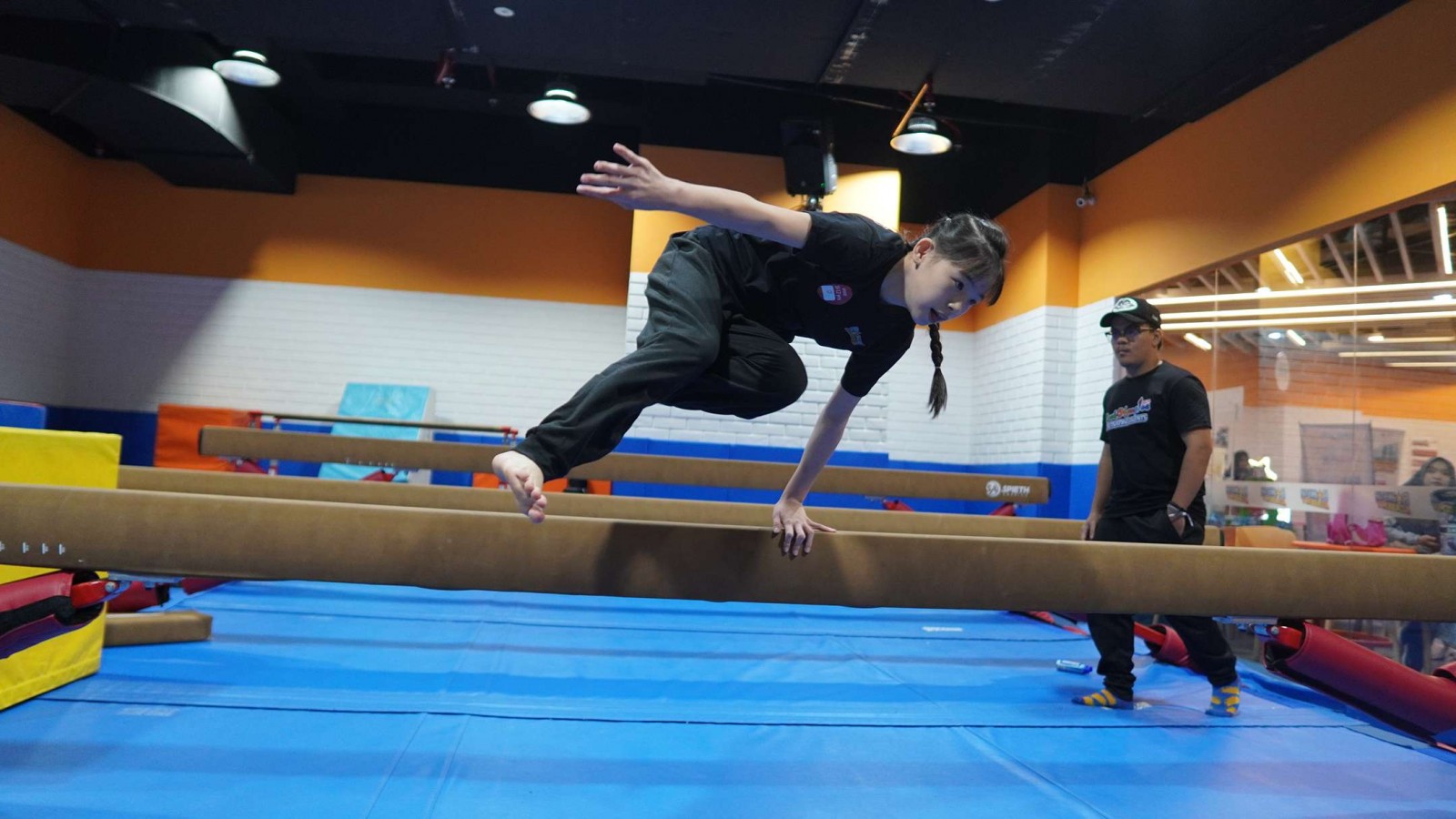Tennis Slice Techniques: How to Execute Perfect Forehand and Backhand Slices

Tennis enthusiasts often seek to refine their game with a variety of shots, and mastering the tennis slice can be a game-changer. The slice shot, known for its backspin and low bounce, can disrupt your opponent's rhythm and create strategic opportunities on the court.
In this article, we'll delve into the intricacies of executing perfect forehand and backhand slices. We’ll provide a step-by-step guide on the techniques involved, explore strategic uses of the slice shot, and offer practical tips to enhance your slicing skills.
Executing the Forehand Slice
Executing the forehand slice involves a precise technique to achieve control and effectiveness. Begin by positioning yourself with the racquet held high, ideally at shoulder height.
As you prepare to strike, open the racquet face so that the strings are angled slightly upwards. During your forward swing, make sure to move the racquet in a high-to-low motion, brushing under the ball to impart backspin.
This involves a long, smooth stroke where the racquet cuts beneath the ball, ensuring a low, controlled bounce. The combination of the racquet's open face and the slicing motion creates a backspin that keeps the ball low and skidding after it bounces.
Executing the Backhand Slice
To execute a perfect backhand slice in tennis, start by positioning yourself with your shoulders rotated to the left and your racket held back above your left shoulder. Your stance should resemble the posture of a baseball batter, but with the racket angled about 45 degrees toward the back fence instead of straight up.
As you complete your backswing, ensure your right shoulder is close to your chin and your right elbow points in the same direction as your right foot. Next, adjust the racket face so that it is angled upward, allowing you to easily brush under the lower part of the ball, generating backspin.
Swing forward with a high-to-low motion, letting go of the racket with your left hand. Unlike a topspin shot, the slice moves forward and downward, with the racket coming around to your right side only after the ball is struck.
Make contact with the ball when it is level with your right shoulder, and follow through until your arm is fully extended, with the racket head pointing toward the ground and ending near the right net post. This technique helps you control the ball’s low bounce and placement, making it an effective shot in various scenarios.
Slice Shot Strategy
The slice shot is a strategic weapon in tennis that can be used to gain an advantage in different game situations. Here’s how you can effectively employ the slice shot to outplay your opponent:
A. Changing the Pace
The slice shot travels slower than a topspin groundstroke, effectively disrupting an opponent’s rhythm who thrives on a fast-paced game. By altering the pace, you can force your opponent to adjust, creating opportunities for you to gain the upper hand.
B. Keeping the Ball Low
After bouncing, the slice shot remains low, which is advantageous on grass and fast hard courts. This low bounce can make it challenging for opponents to attack, as they must adjust their positioning and stroke.
C. Approach Shots
Using a slice for approach shots can force your opponent to hit the ball upwards, making it easier for you to execute a high volley at the net.
D. Defensive Shots
When stretched or on the run, a slice shot provides time to recover by forcing the opponent to deal with a slower, low-bouncing ball, allowing you to reposition and prepare for the next shot.
When to Use the Slice Shot
The slice shot is a valuable tool in tennis, offering strategic advantages in various situations. Knowing when to deploy this technique can significantly impact your performance on the court. Here’s the explanation on when to use the tennis slice shot:
1. On the Defensive
When pulled wide, a slice shot can provide crucial time to recover and reposition. Its slower speed and lower bounce make it easier to regain court balance and prepare for the next shot.
2. Variety and Disruption
A slice can effectively disrupt an opponent's rhythm, especially if they are accustomed to topspin. The change in pace and spin can lead to errors or weaker returns, creating opportunities for you to capitalize.
3. Approach Shots
Using a slice for approach shots is strategic because it stays low, forcing the opponent to hit upward. This often results in less accurate and more vulnerable passing shots, setting you up for an easier volley.
4. Against Power Players
A slice can be particularly effective against power players, as it remains low and can be difficult for them to attack, especially if they prefer hitting balls that are waist to chest high.
5. Playing Drop Shots
The slice is ideal for executing drop shots. Its backspin slows the ball and reduces its bounce, making it challenging for opponents to reach and respond effectively.
6. Keeping the Ball In Play
When out of position or needing extra time, a slice shot is a reliable way to keep the ball in play and maintain control, giving you a chance to recover and regroup.
7. Return of Serve
For returning powerful serves, particularly on the backhand side, a slice can help neutralize the pace and provide a more controlled and manageable return.
Tips to Improve Your Slice Shot
Improving your tennis slice shot can significantly enhance your overall game by adding variety and strategic depth. Here are some valuable tips to help you refine your slice shot and make it a more powerful tool in your tennis arsenal:
A. Practice Widening Your Serve Angle
To enhance your slice shot, focus on practicing wide-angle serves. By slicing the ball out wide, you'll improve your ability to control the direction and placement of your slice shots, making them more effective in disrupting your opponent's positioning.
B. Practice in the “Magic Chair”
Use the "magic chair" drill to improve your slice shot by working on increasing your serve's height. This drill involves sitting or leaning back as if in a chair, helping you develop a higher and more consistent ball toss, which translates to better slice execution.
C. Exaggerate the Twist of Your Shoulder
During your follow-through, exaggerate the twist of your shoulder to generate more backspin and control.
A pronounced shoulder rotation enhances the slice's effectiveness, giving the ball a sharper, lower bounce and making it more challenging for your opponent to attack.
Start Slicing Your Way to Success Today!
Utilizing the slice effectively can disrupt your opponent's rhythm and create opportunities for advantageous positions. With consistent practice and attention to detail, you’ll find the tennis slice becoming a reliable part of your playing arsenal. Embrace these techniques, and let your newly honed slice shots add a new dimension to your game.
Looking to elevate your game? At Rockstar Academy, our Tennis Program offers top-notch coaching designed to sharpen your skills and boost your performance.
Whether you're curious about the unique dynamics of touchtennis vs tennis or looking to enhance your skills for competitive play, our program caters to all levels and interests. Our expert coaches provide top-notch training, preparing players for exciting events like the RockOlympics.
And the best part? You can experience all this with a free trial! Come and see for yourself how our expert coaches and state-of-the-art facilities can help you elevate your game. Don’t miss this chance to elevate your tennis skills at the Sports & Performing Arts Academy!
FAQ
What is a slice in tennis?
A slice is a shot with backspin that makes the ball stay low and skid after bouncing.
When should you slice in tennis?
You should slice when on defense, to change the pace, during approach shots, against power players, for drop shots, or to keep the ball in play.



